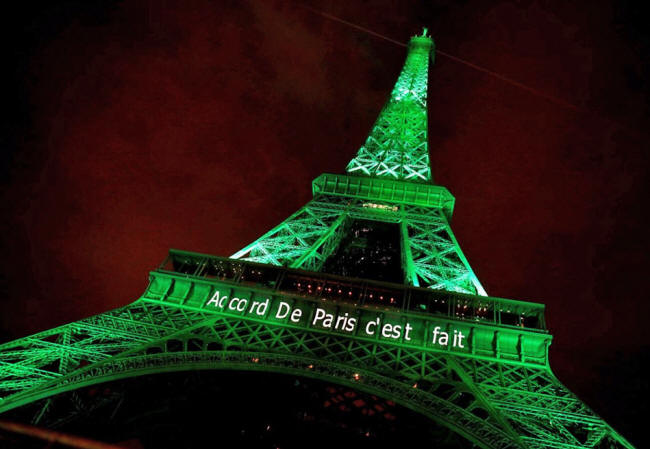|

by Steven E. Koonin
June 11, 2024
from
ClimateChangeDispatch Website

The 'Climate
Crisis' Fades Out.
As the energy transition inches through the
'issue
attention' cycle,
a wiser approach
should emerge...
The
2015 Paris Agreement aspired to
"reduce the risks and impacts of climate change" by eliminating
greenhouse gas emissions in the latter half of this century.
The centerpiece of the strategy was a global
transition to low-emission energy systems...!
After nearly a decade, it's timely to ask how
that energy transition is progressing and how it might fare in the
future.
A useful framework for that assessment is the "issue attention
cycle"
described in 1972 by Brookings
Institution economist Anthony Downs.
The five phases of that cycle mark the rise, peak, and decline in
public salience of major environmental (and other) problems.
It's spooky to see how closely the energy
transition has so far followed Downs's description.
During Phase I, the issue of
"global warming" bubbled among climate scientists through the 1980s
with little public attention.
Phase II began about 35 years ago when the issue -
eventually rebranded "climate change" - burst into
public consciousness, with global media coverage growing tenfold
over the past two decades.
Those years were marked by a fervor for doing
something to "solve" the problem.
However, the significant global emissions
reductions envisioned in Paris are now a fantasy.
Emissions grew to an all-time high in 2023, with consumption of
coal,
oil, and
natural gas each near record
levels, driven in large part by the energy needs of the developing
world.
Despite global renewable-energy investment of
almost $12 trillion in the nine
years ending in 2023, fossil fuels continue to provide
about 80% of the world's energy.
The latest
United Nations emissions report
projects that emissions in 2030 will be almost twice as high as a
level compatible with the Paris aspiration.
The challenges in reducing emissions have long been evident to the
few who care to understand demographics, economics, and energy
technologies.
As more people have come to appreciate those factors, there are
signs that the "climate crisis" has entered Downs's Phase III,
when ambitious goals collide with techno-economic realities.
In Europe,
-
consumers are rebelling against measures
to reduce emissions (fiascos of
home heating
requirements had electoral consequences in the
U.K., Germany, and the Netherlands)
-
industry is decamping in search of
cheaper energy...
Despite generous subsidies, U.S. deployment of
low-emission technologies can't meet near-term goals, let alone the
projected surge in electricity demand owing to data centers,
artificial intelligence, and electric vehicles.
"Green" investments aren't yielding competitive financial returns,
and the annual cost of a 30-year decarbonization effort,
estimated to be upward of 5% of the
global economy, weighs on national budgets.
Simultaneously,
the scientific rationale for the transition
is weakening as expectations of future warming are moderating.
What could revive this flagging transition?
Perhaps connections between human influences on
climate and the disastrous effects of more frequent severe weather.
But despite claims to the contrary,
the U.N.
finds such connections haven't emerged for most types of weather
extremes.
The complexity of climate science makes it
unlikely that will happen anytime soon.
The transition could also be reinvigorated by the development
and deployment of reliable, cost-competitive low-emission energy
systems.
But there are fundamental reasons why energy
systems change slowly.
The energy transition's purported climate benefits are,
distant, vague, and
uncertain,
...while the costs and disruption of rapid
decarbonization are,
immediate and substantial...!
The world has many more urgent needs, including
the provision of reliable and affordable energy to all.
It's therefore likely that Downs's Phase IV will
begin,
as "climate fatigue" sets in, "climate
action" fades into the background, and public attention shifts
to a different perceived threat (such as
artificial intelligence)...
This would be followed by the long twilight of
Phase V when the issue of decarbonization flares
sporadically, but the associated regulations and institutions
endure, such as,
-
carbon pricing
-
border adjustments
-
clean power standards...
U.S. and European governments are trying to
induce an energy transition by building or expanding organizations
and programs favoring particular "clean" technologies, including,
Promoting technological innovation is a worthy
endeavor, but such efforts face serious challenges as,
costs and disruptions
grow without tangible progress in reducing local, let alone
global emissions...!
Video
|


